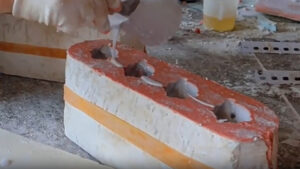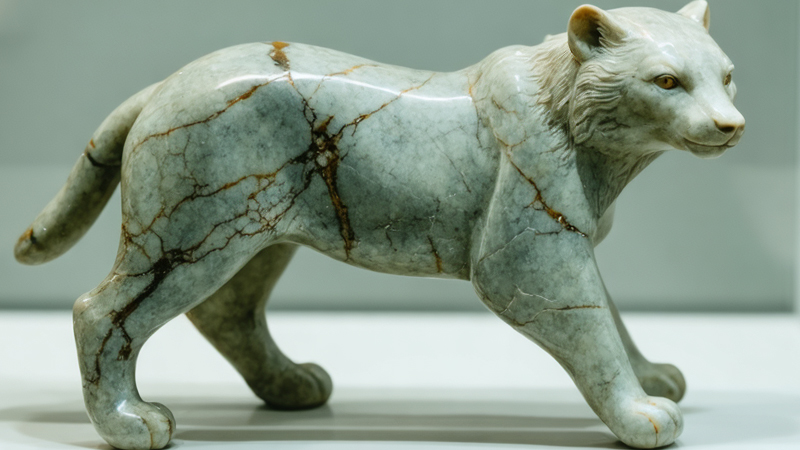
Resin sculptures can be mesmerizing, but are they really safe? Let’s explore how safe they are for both creators and viewers.
Resin sculptures are generally safe, but it's important to understand the potential hazards and take necessary precautions to handle them properly.
Now, let’s dive into the safety of resin sculptures.
How safe are resin materials?
How does resin compare to other materials in terms of safety?
Resin materials, when used correctly, are safe for most applications, but improper handling or exposure can pose risks.
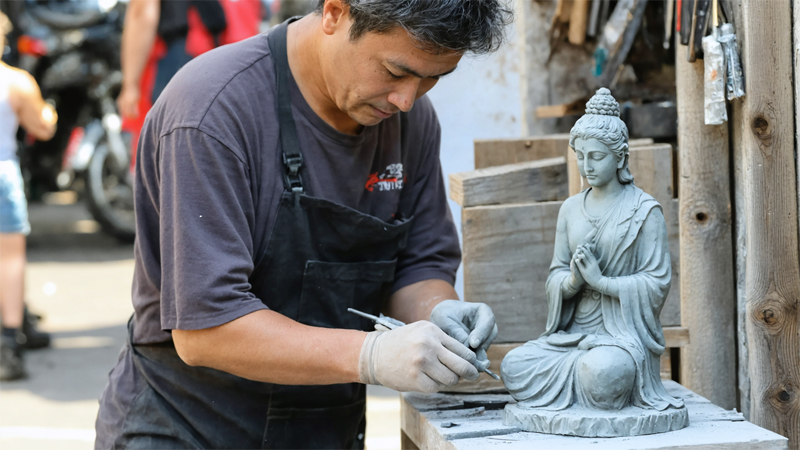
When I first started working with resin, I was amazed by how versatile and durable it is. But I quickly realized that resin isn’t just “pour and go.” While resin itself is safe once cured, it can be hazardous during the mixing and curing process. The chemicals used to create resin sculptures can emit fumes that may irritate the skin or eyes, and prolonged exposure to the liquid form can be harmful if not handled properly.
Resin materials come in two main types: epoxy resin and polyester resin. Epoxy resin is considered less toxic than polyester, but both types require care in use. Ensuring proper ventilation, wearing protective gear like gloves and masks, and following safety guidelines is essential to avoid risks during the crafting phase. Learn more about resin types and safety1.
Types of Resin and Their Safety Levels
- Epoxy Resin: Less toxic, but still requires proper handling.
- Polyester Resin: More hazardous due to the chemicals used.
- UV Resin: Cures quickly under UV light, but should still be handled with care.
| Type of Resin | Safety Level | Handling Requirements |
|---|---|---|
| Epoxy Resin | Low Toxicity | Wear gloves, ensure ventilation |
| Polyester Resin | High Toxicity | Use in well-ventilated areas, gloves, mask |
| UV Resin | Low Toxicity | Avoid direct skin contact, use in controlled environments |
By understanding the differences, I can better decide which resin to use for a given project, keeping both myself and my clients safe.
What are the potential hazards and how can they be mitigated?
What could go wrong with resin, and how can we reduce the risks?
Potential hazards include inhaling fumes, skin contact with uncured resin, and even the risk of fire during curing. However, these can be easily mitigated with safety precautions.
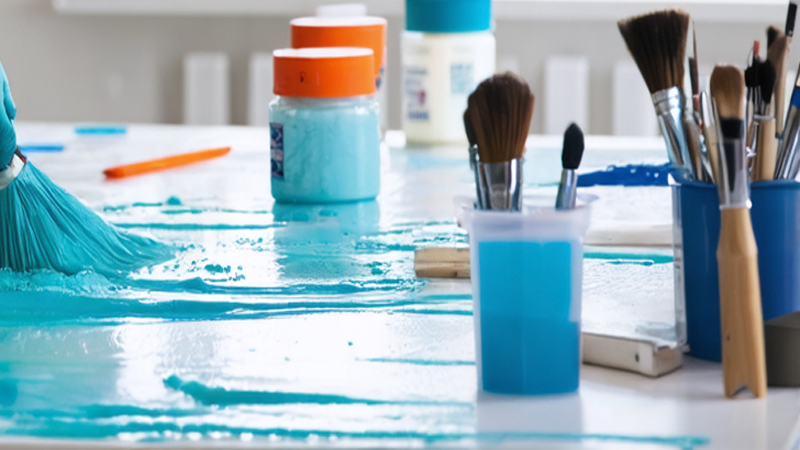
Resin crafting is a rewarding experience, but it’s not without its risks. The main hazards to consider are the toxic fumes that may be released during the mixing and curing process. Polyester resin2, for instance, emits styrene gas, which is harmful when inhaled in large amounts. Skin irritation from prolonged exposure to uncured resin is another concern. Fortunately, these risks can be mitigated with a few simple steps.
Here’s how I keep myself safe while working with resin:
- Ventilation: Always work in a well-ventilated area or use a respirator mask to avoid inhaling fumes.
- Protective Gear: Gloves, goggles, and long sleeves are essential to protect against skin irritation and accidental splashes.
- Fire Safety: Some resins can be flammable, so I make sure to work away from open flames and avoid heat sources.
Mitigating Resin Hazards
By following these precautions, I’ve never encountered serious issues. I also recommend checking the manufacturer’s guidelines for each specific resin type, as some resins may have different hazards. Discover more about resin safety precautions3.
| Hazard | Mitigation Strategy |
|---|---|
| Inhalation of Fumes | Ensure good ventilation, use a mask if necessary |
| Skin Contact with Uncured Resin | Wear gloves, long sleeves, and goggles |
| Fire Risk during Curing | Keep away from heat sources, avoid open flames |
How should resin art be safely handled and placed?
How can you ensure your resin sculptures stay safe and intact?
Resin art should be handled carefully during both the creation and display phases to avoid damage and potential harm.

I’ve always been drawn to the striking beauty of resin sculptures, but I quickly learned that they need some special care to stay intact. During the creation phase, resin sculptures must be allowed to cure fully before being touched or moved. This gives the resin time to harden properly and reduces the risk of damage or fingerprints.
When it comes to displaying resin art, the right placement is key. Resin can be sensitive to temperature fluctuations4, so keeping sculptures away from direct sunlight, heat sources, or extreme cold is crucial. Even small changes in temperature can cause cracking or warping over time.
Here are a few handling and display tips I follow:
- Curing Time: Always allow the sculpture to fully cure before touching or moving it.
- Temperature Control: Keep resin art away from heat or direct sunlight.
- Gentle Handling: Avoid bumping or dropping resin sculptures to prevent breakage.
Best Practices for Displaying Resin Art
I've also learned that placing resin sculptures on stable, non-slippery surfaces helps avoid accidental tipping or falling. For outdoor sculptures, additional weatherproofing5 is recommended to protect against moisture.
| Handling Tip | Action |
|---|---|
| Curing Time | Let resin art cure fully before moving or touching |
| Temperature Control | Keep away from heat or direct sunlight |
| Gentle Handling | Avoid dropping or placing on unstable surfaces |
These steps ensure my resin art stays as stunning and safe as it was when I first made it.
What environmental considerations should be taken into account when using resin?
How does working with resin impact the environment, and what can we do about it?
Resin crafting has environmental implications, from the chemicals involved to the disposal of waste. Being mindful of these aspects helps reduce its environmental footprint.
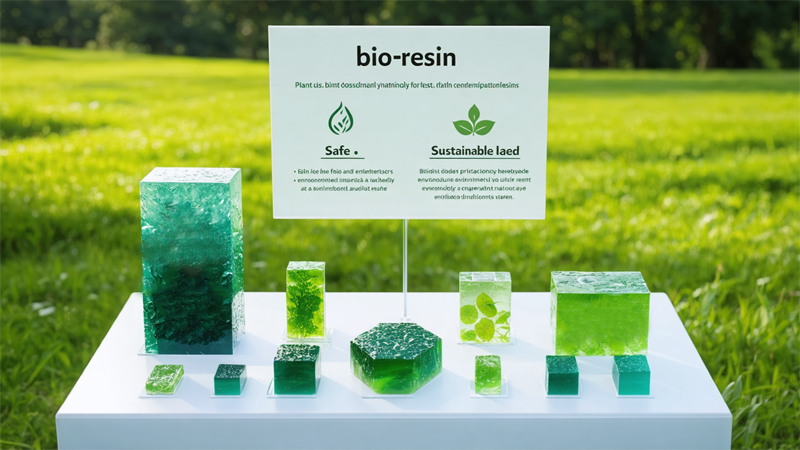
As much as I love working with resin, I’m also aware of its environmental impact. The chemicals in resins, particularly polyester6 and epoxy7, can be harmful if not disposed of correctly. Resin waste, such as mixing containers, gloves, and leftover resin, should be treated as hazardous waste, not thrown into regular trash.
To minimize my environmental footprint, I always:
- Use non-toxic resin when possible, especially for smaller projects.
- Dispose of waste responsibly by taking it to a designated hazardous waste facility.
- Consider sustainable alternatives like bio-resins, which are made from renewable resources.
Sustainable Resin Alternatives
Bio-resins are made from plant-based materials and are much more environmentally friendly than traditional resins. While they’re not yet as widely available or as versatile as synthetic resins, they are an exciting step in the right direction for reducing resin’s environmental impact.
| Environmental Concern | Mitigation Strategy |
|---|---|
| Toxic Resin Chemicals | Choose non-toxic or bio-based resins |
| Resin Waste Disposal | Dispose of waste at a designated facility |
| Carbon Footprint | Use sustainable alternatives, like bio-resins |
By being mindful of these factors, I feel better about the choices I make and how they impact the world around me.
Conclusion
Resin sculptures can be safe when proper precautions are taken. Keep safety in mind to enjoy the crafting process and create beautiful art.
-
This link provides a comprehensive guide to the best safety practices when working with resin, from ventilation to protective gear. ↩
-
The link to "Polyester resin" will help you understand the specific risks, such as styrene gas emissions, which can be harmful when inhaled. Knowing these dangers is important for your safety when choosing or working with polyester resin. ↩
-
The link to "resin safety precautions" will provide you with essential guidelines for working safely with resin. By exploring these resources, you’ll ensure that you’re aware of the necessary precautions—like proper ventilation and protective gear—that can significantly reduce the risks and make your crafting experience safer. ↩
-
The link to "temperature fluctuations" will help you better understand how extreme heat, cold, or even mild shifts in temperature can impact the longevity and appearance of your resin art. Knowing this will help you avoid potential damage like cracking or warping. ↩
-
The link to "weatherproofing" will provide you with essential guidance on how to protect outdoor resin sculptures from moisture and weather conditions. Proper weatherproofing ensures that your art remains intact and vibrant even when exposed to the elements. ↩
-
The link to "polyester" will help you better understand the environmental issues related to the use of polyester resins, particularly their harmful chemicals and the proper methods of disposal. This knowledge can help you make informed decisions about choosing more eco-friendly materials. ↩
-
The link to "epoxy" will provide insight into the specific environmental concerns tied to epoxy resins, such as their toxicity and potential for pollution. Understanding these impacts allows you to take appropriate actions, like opting for safer disposal methods or sustainable alternatives, to reduce your environmental footprint. ↩


